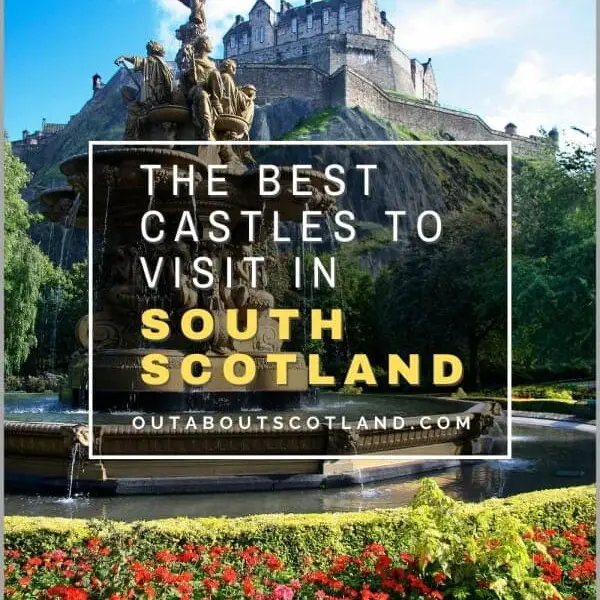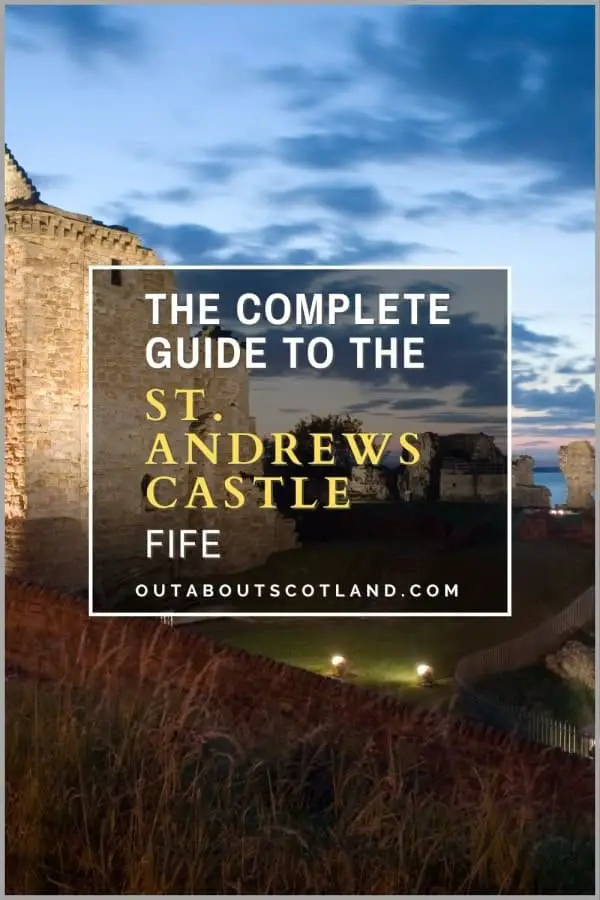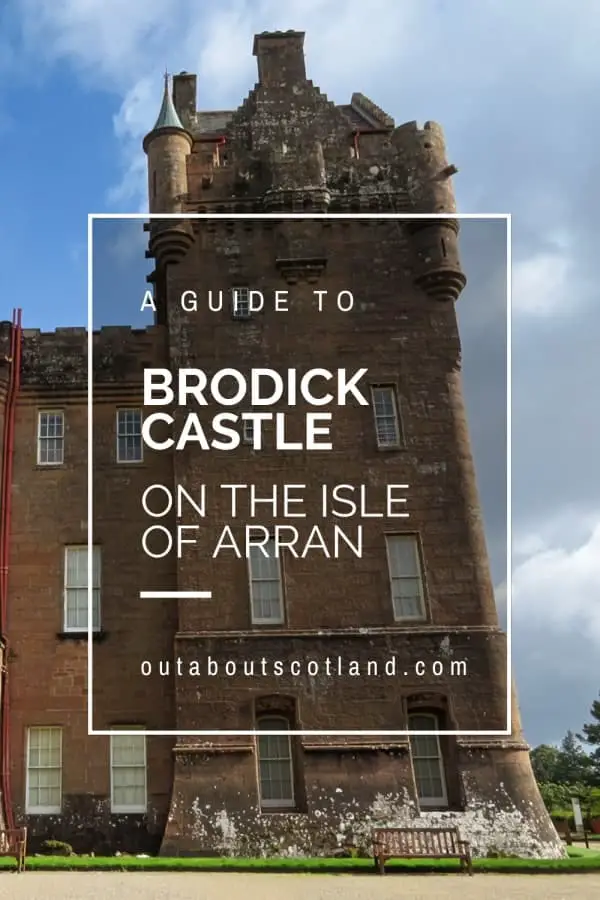Scotland is home to some of the most breathtaking and awe-inspiring castles in the world. With nearly 1,500 towering turrets and sprawling curtain-walled fortresses to see during a sightseeing tour, Scotland’s castles offer visitors a unique glimpse into the country’s past.
In this article, you’ll find a collection of the best castles to visit in South Scotland from world-renowned palaces like Stirling and Edinburgh to Scottish castle ruins such as Dunbar and Tantallon.
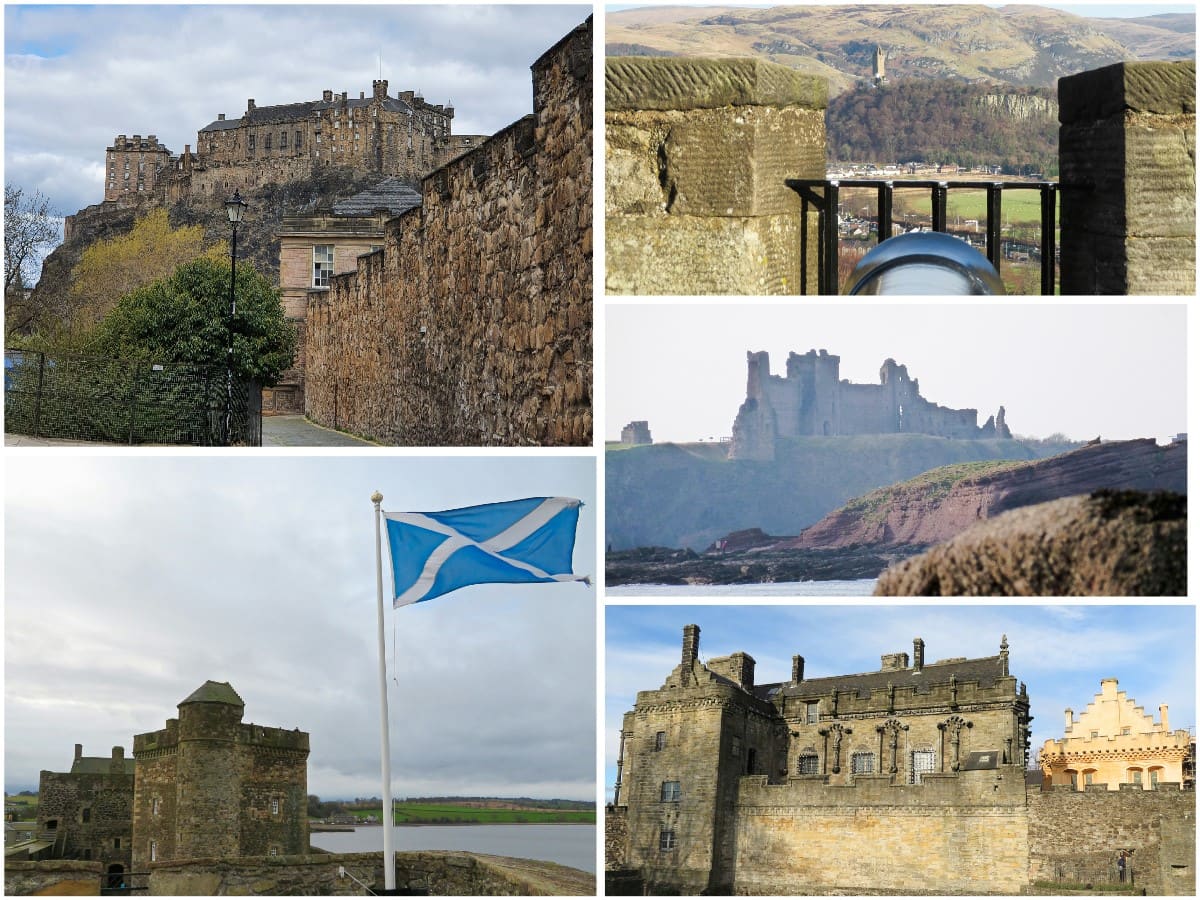
Edinburgh Castle
- Address: Castlehill, Edinburgh, EH1 2NG
- Contact details: Tel 0131 225 9846
- Out About Scotland complete guide: Edinburgh Castle
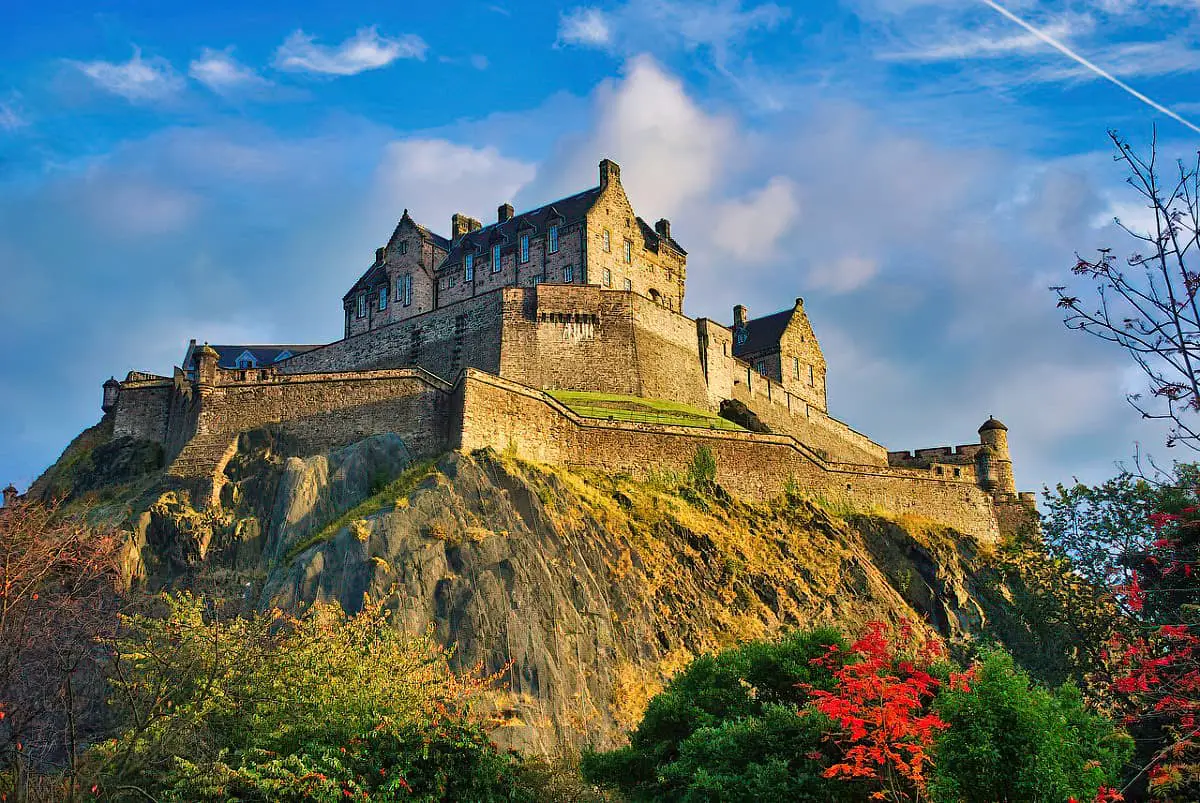
Edinburgh is home to the biggest castle in Scotland, which rightly deserves its place as the country’s number-one tourist attraction, as it’s one of the finest fortifications in Europe, if not the world. More than two million people flock to the city each year to visit Edinburgh Castle and although the ticket prices are on the steep side, there’s enough going on that you could quite easily spend the majority of your day there.
Highlights include the Argyll battery which has the best views in the city (it’s also where the One o’Clock Gun fires), the Palace Yard where you can say hello to Mons Meg (an enormous 15th-century cannon), and St. Margarets Chapel which is believed to be the oldest building in Edinburgh.
Other areas worth exploring are the Royal Palace where Mary Queen of Scots lived and the Crown Room which houses the Honours of Scotland (Scotland’s Crown Jewels).
There are a couple of military museums in the castle as well as the Scottish National War Memorial, and the Great Hall opposite the memorial is full of original examples of weaponry from Scotland’s proud military heritage.
One event I have to mention is the military tattoo held annually on the Castle Esplanade throughout August. The Edinburgh Tattoo is a fantastic experience that I guarantee you’ll never forget, so if you’d like to book a seat, visit the Edinburgh Military Tattoo website, but book early as tickets sell out months in advance. All that, coupled with the attraction’s excellent café, restaurant, and shops, makes a visit to Edinburgh Castle an absolute necessity.
Stirling Castle
- Address: Castle Esplanade, Stirling, FK8 1EJ
- Contact details: Tel 01786 450 000
- Out About Scotland complete guide: Stirling Castle
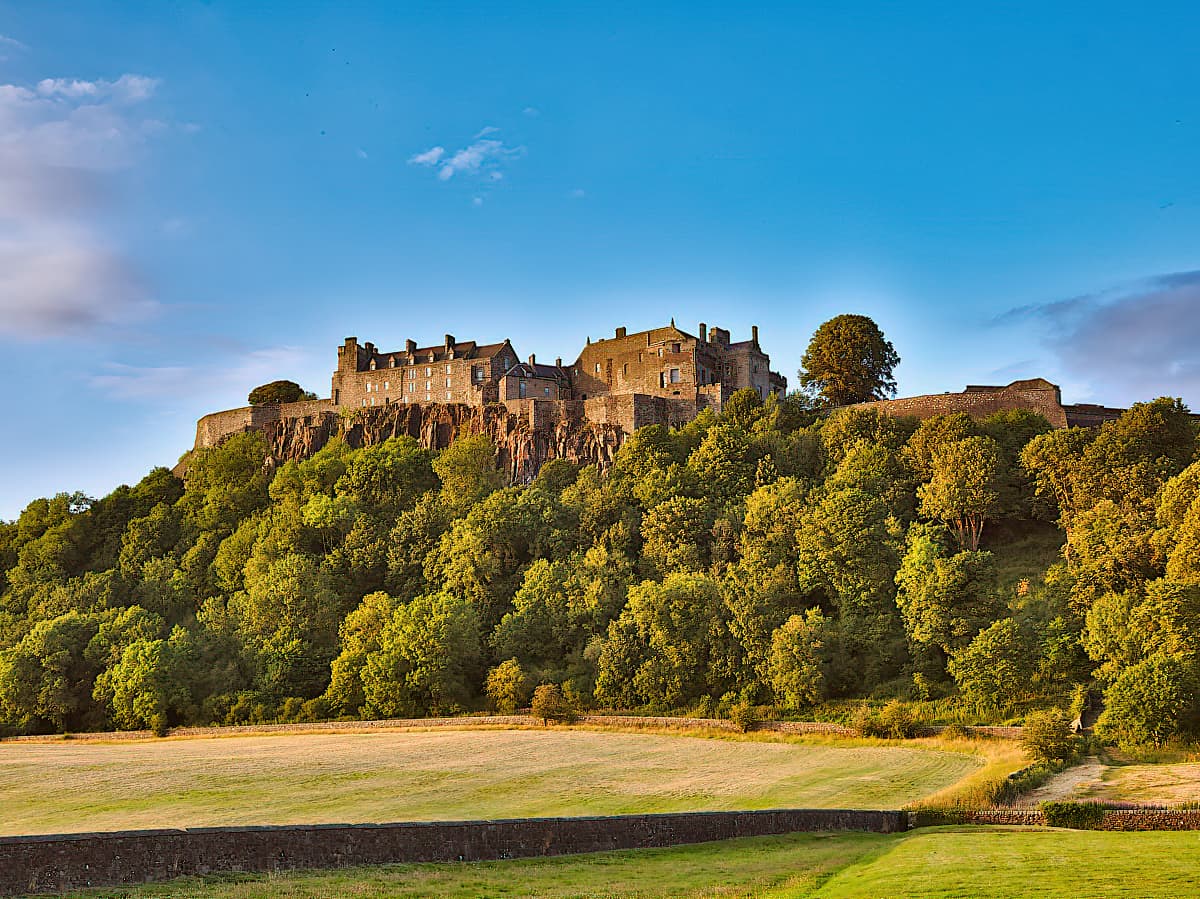
The ancient and incomparable Stirling Castle is one of Scotland’s top tourist attractions, in part due to the fact that it has so much history waiting to be discovered during a visit. The castle was the royal seat of power long before Edinburgh Castle took the mantle, and it was also the childhood home of Mary Queen of Scots.
Like Edinburgh Castle, Stirling Castle was built on top of an enormous rock pinnacle that would have been virtually impenetrable back in the day, which is the main reason it served as a royal palace for hundreds of years.
Inside the main courtyard, visitors can explore the Royal Palace and the Great Hall, both of which have been restored to their original condition, so they look identical to how they would have looked when they were built over 500 years ago. The palace, in particular, is a fascinating place that’s full of original artwork and furniture.
This historic attraction does a first-class job of transporting you back in time to the reign of James V, helped no end by the tour guides dressed in character costumes who’ll be only too glad to retell the stories of some of the castle’s most famous inhabitants. There’s also a museum on the site that explains the history of the Argyll and Sutherland Highlanders, and there are the Queen Anne Gardens that offer visitors stunning views of the Stirling countryside.
As you might expect, the facilities at this attraction are first class with an extensive gift shop, a café with a rooftop terrace, public toilets, and ample parking.
If you’d like to visit Stirling Castle yourself I highly recommend booking a tour with Rabbies. These friendly small-group tours use mini-coaches that seat no more than 16 people so you’ll get to know the people around you and make friends during your excursion.
The Rabbies Stirling Castle, Loch Lomond, & Whisky Tour starts in Glasgow (1 hour by train from Edinburgh) and heads deep into the heart of some of the most scenic regions in Scotland, including the Trossachs National Park, the stunning Loch Lomond, and Stirling Castle. Find out more about this tour on the Rabbies website.
Aberdour Castle
- Address: Aberdour, Fife, KY3 0SL
- Contact details: Tel 01383 860 519
- Out About Scotland complete guide: Aberdour Castle
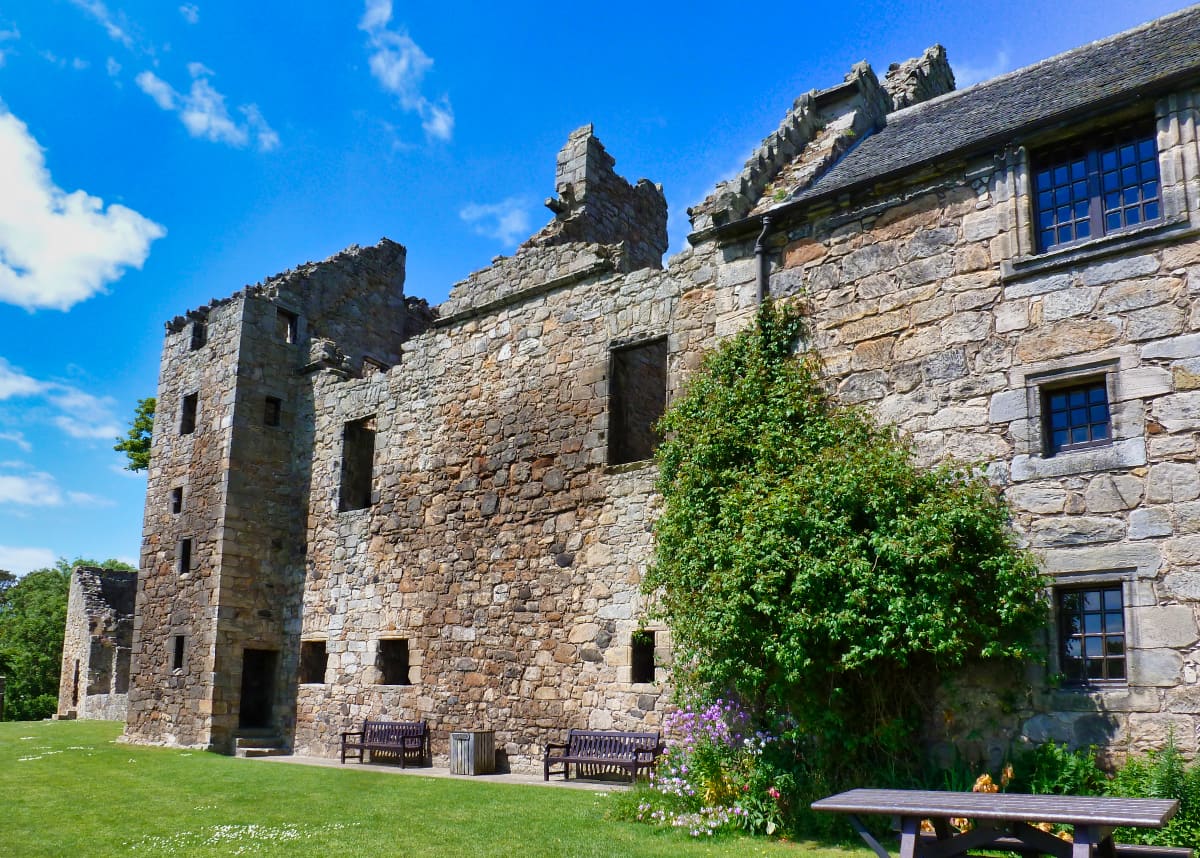
Aberdour Castle in Fife is one of the oldest castles in Scotland. It was built in the 1100s by Sir Alan de Mortimer but was later handed over to the powerful Douglas family who kept it as their family home until 1725.
Sadly, a fire destroyed much of the building in 1688, and a large section of the castle was never repaired, which is why you might be surprised to find yourself walking through ruins before entering the still-intact main building.
Inside, the rooms have been restored to virtually the same condition as when the Douglas’s lived there thanks to the efforts of Historic Environment Scotland which has also installed several information boards that explain the history of the castle and the people who lived and worked in it.
There are a couple of highlights of Aberdour that are worth mentioning, the first of which is the landscaped garden that’s open for visitors to walk around. The area nearest the castle is terraced, and there are picnic benches installed next to an on-site café, making it a great place for a spot of outdoor eating on a sunny day. The far end of the garden is home to one of the largest dovecots in Scotland, and nearby is a lovely wee orchard that’s heavy with the scents of ripe fruit in summer and autumn.
Moving around to the front of the castle takes you past a disabled car park into a large walled garden that’s set to lawn and flower borders, and a small family church can be found through a door at the far end which is also open to visitors.
As far as facilities go, there is a shop, café, and toilets, but no car park for non-disabled guests. There is, however, ample parking at Aberdour train station, which is located just a couple of hundred yards from the castle entrance.
Blackness Castle
- Address: Blackness, Linlithgow, West Lothian, EH49 7NH
- Contact details: Tel. 01506 834 807
- Out About Scotland: A Complete Guide: Blackness Castle
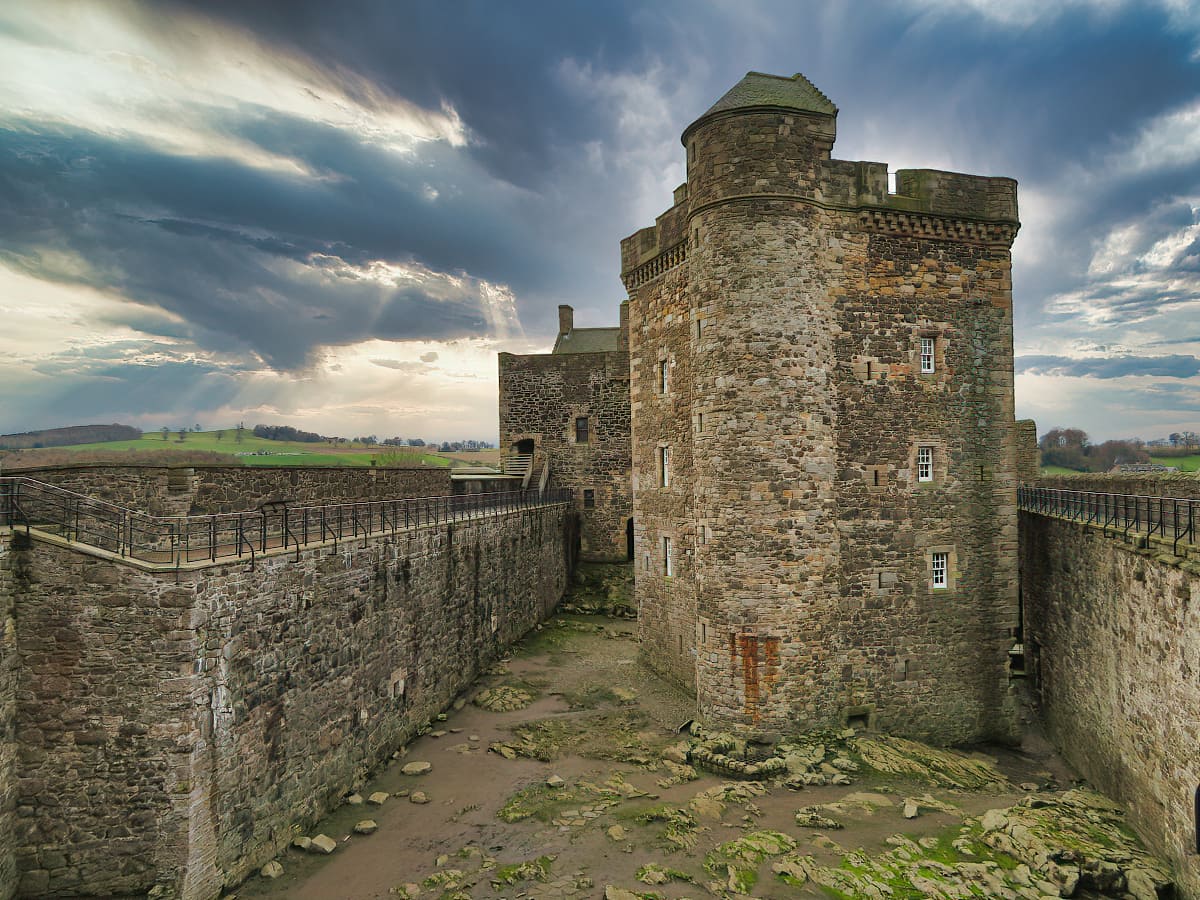
Blackness Castle lies on the southern shore of the Firth of Forth, more-or-less midway between Edinburgh and Linlithgow.
The reason it has such a large external wall is because the wealthy Crichton family constructed it in the 1400s to stop encroaching armies from sailing into Scotland’s interior via the estuary. This wall is angled to deflect cannon fire, which gave it the unintentional shape of a ship’s bow, which is the reason why the castle has had the nickname ‘the ship that never sailed’ for hundreds of years.
Its shape has made it one of the most recognisable castles in South Scotland, along with the fact that it saw military use during WWI, long after many other Scottish castles had fallen into ruin.
Today, visitors can explore Blackness Castle’s tower house and residential building during a self-guided tour, and it’s also possible to access a walkway on top of the outer curtain wall and a viewing platform at the very top of the central tower. From either location, the views across the Firth of Forth are stunning, with wide mud flats that are a haven for wading birds and uninterrupted views east and west along the Fife coastline.
In addition, the old prison and lookout towers are open to the public, but unfortunately, the officer’s quarters situated in the entrance courtyard are closed, as is the barrack block opposite. That being said, there are more than enough things to see to keep tourists entertained for an hour or more at Blackness Castle, and the picnic benches on the lawn offer mesmerising views across the Firth of Forth.
If you’d like to spend a little longer at the attraction, there’s a path leading behind the castle that leads down to a bay and a small strip of beach, and there’s also a footpath heading west that follows the coastline for three miles before finishing near Boness Motor Museum.
Blair Castle
- Address: Blair Atholl, Pitlochry, PH18 5TL
- Contact details: Tel. 01796 481207
- Out About Scotland: A Complete Guide: Blair Castle
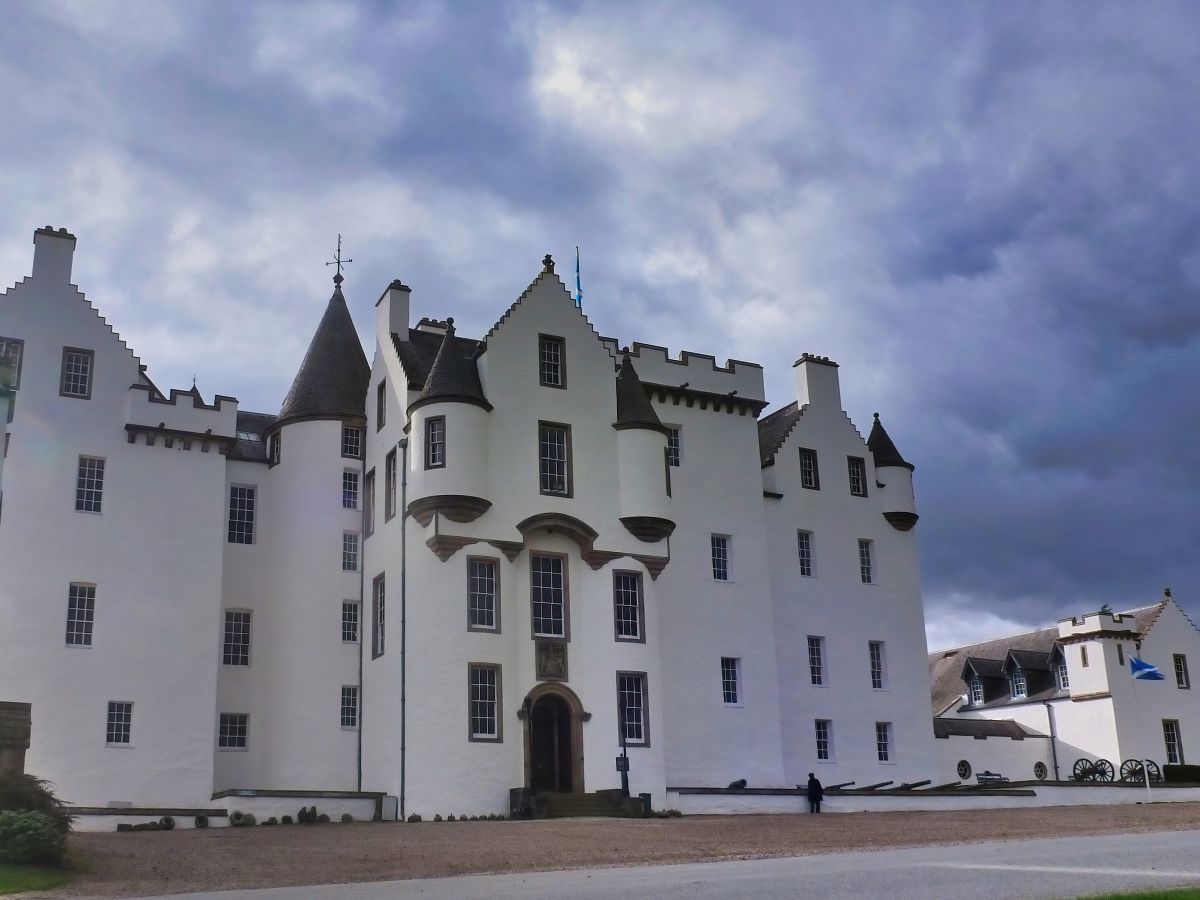
You’ll find Blair Castle nestled in rolling countryside near the village of Blair Atholl in Perthshire, within easy access of the A9 and B8079. The castle has an enormous amount of history behind it and has served an incredible nineteen generations of the Atholl family for over 750 years.
In my opinion, Blair Castle is up there with Dunrobin when it comes to fairy-tale looks, and it’s not far from what you might imagine a real-life Disney castle would look like with its turrets, battlements, and breathtaking scenery in every direction.
During a self-guided tour, visitors are free to walk around the castle at their leisure, which can be a wee bit overwhelming as the castle is so big, but thankfully there are lots of guides on hand to answer questions and explain the history of the exhibits.
There are over 30 rooms that are accessible to tourists, and they’re all chock-full of sculptures, paintings, and memorabilia, which makes a nice change from some of the castles on this list that are nothing more than ruins. But as nice as the interior is, perhaps the highlight of a visit to Blair Castle is exploring the surrounding gardens.
The gardens are enormous and include a walled garden, a conifer woodland, a secluded grove, and a sculpture trail, making them a perfect place for a summer visit.
Caerlaverock Castle
- Address: Glencaple, Dumfries, DG1 4RU
- Contact details: Tel. 01387 770 244
- Out About Scotland: A Complete Guide: Caerlaverock Castle
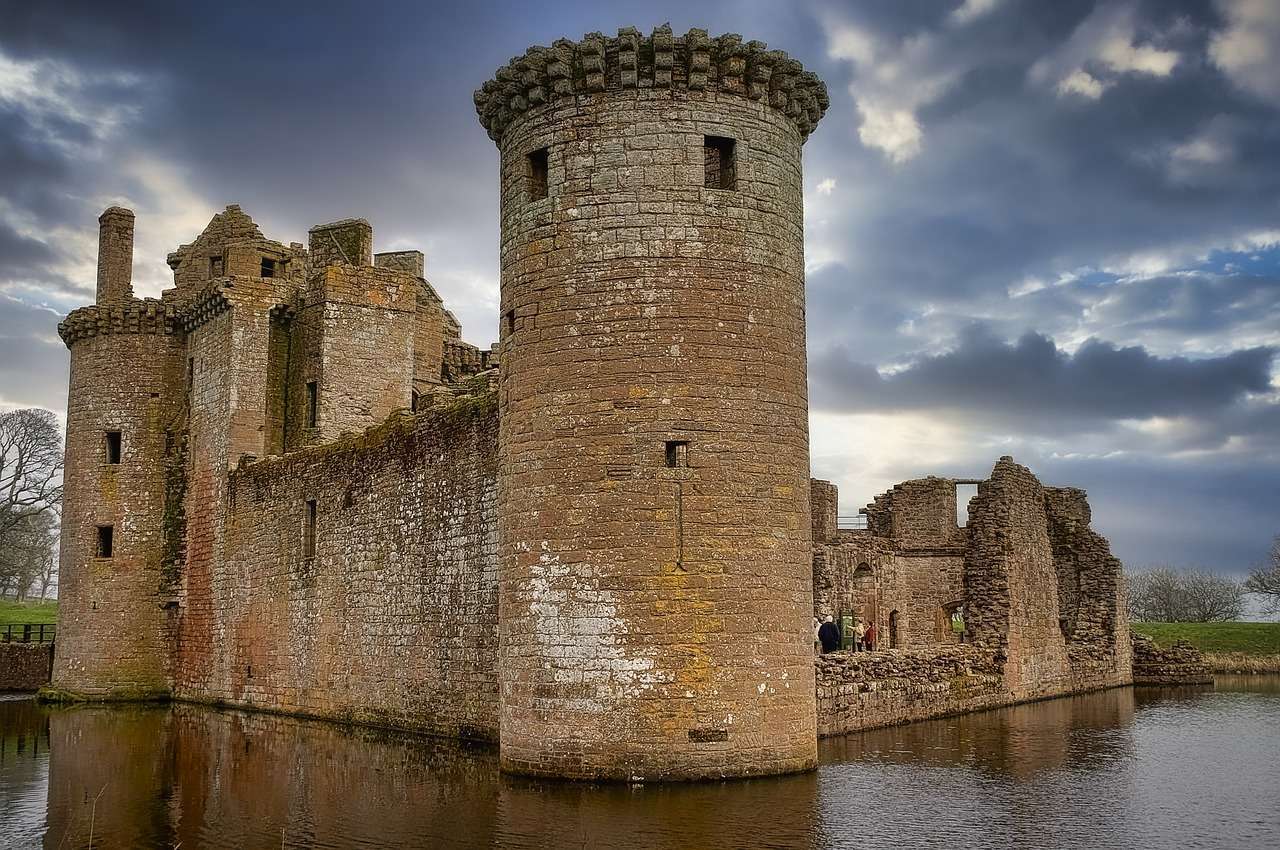
Caerlaverock Castle is one of the most interesting castles in Dumfries and Galloway, not because it’s particularly big or historically significant, but because it has an unusual triangular shape that (as far as I know) is unique in Scotland. That, and the fact that it’s set in one of the few remaining moats left in the country, means it’s very photogenic, so don’t forget to bring your camera with you when you visit.
Although it won’t take much more than an hour to fully explore the castle and the grounds, there’s quite a lot you can do in the immediate area thanks to the track that runs down to Caerlaverock Nature Reserve.
The nature reserve has paths leading through grassland that offer lovely walks into the Solway Firth, and you’ll no doubt see lots of wildlife on the way. Even if you’re not bothered about exploring the castle, it’s still worth visiting just to go for a walk to see what is arguably one of the nicest parts of the Dumfries coastline.
Heading back to the castle after a coastal walk allows you to let the kids off the leash on the grounds outside the museum, where there are picnic benches and a small play park. The wee museum with its reconstructions of mediaeval weapons is quite interesting, and there’s an on-site café if hungry bellies start rumbling.
The visitor centre also has a shop with the usual history-themed souvenirs; there are public toilets; and the car park has space for around 20 cars.
Castle Campbell
- Address: Castle Campbell, Dollar, Clackmannanshire, FK14 7PP
- Contact details: Tel. 01259 742 408
- Out About Scotland: A Complete Guide: Castle Campbell

Dollar Glen in Clackmannanshire is home to a castle that has one of the nicest terrace views in Scotland. Castle Campbell is a 15th-century fort that was originally built as the family home of Lord Lorne, but it passed into the ownership of Clan Campbell when the 1st Earl of Argyle married Lord Lorne’s daughter.
The Campbells owned it for more than 400 years, but it was handed over to the state in the 1940s, at which point it was designated as a scheduled ancient monument.
Tourists will find Castle Campbell a fascinating place to explore with its atmospheric tower house and courtyard and an accessible rooftop that offers panoramic views over Dollar Glen. The glen draws just as many visitors to the area as the castle does, and I totally recommend you go there if you’re ever in Clackmannanshire and looking for something to do.
It’s a great place to go for a walk on a sunny afternoon, and it’s full of wildlife, including red squirrels, deer, and birds of prey, so it’s worth taking a pair of binoculars with you as you never know what you’ll see (if you don’t have a pair, I recommend these binoculars).
Access is easy from the castle, as there’s a path leading into Dollar Glen from the castle entrance, but there are other entrance points at the Dollar Glen car park (postcode FK14 7BZ).
Craigmillar Castle
- Address: Craigmillar Castle Road, Edinburgh, EH16 4SY
- Contact details: Tel. 0131 661 4445
- Out About Scotland: A Complete Guide: Craigmillar Castle
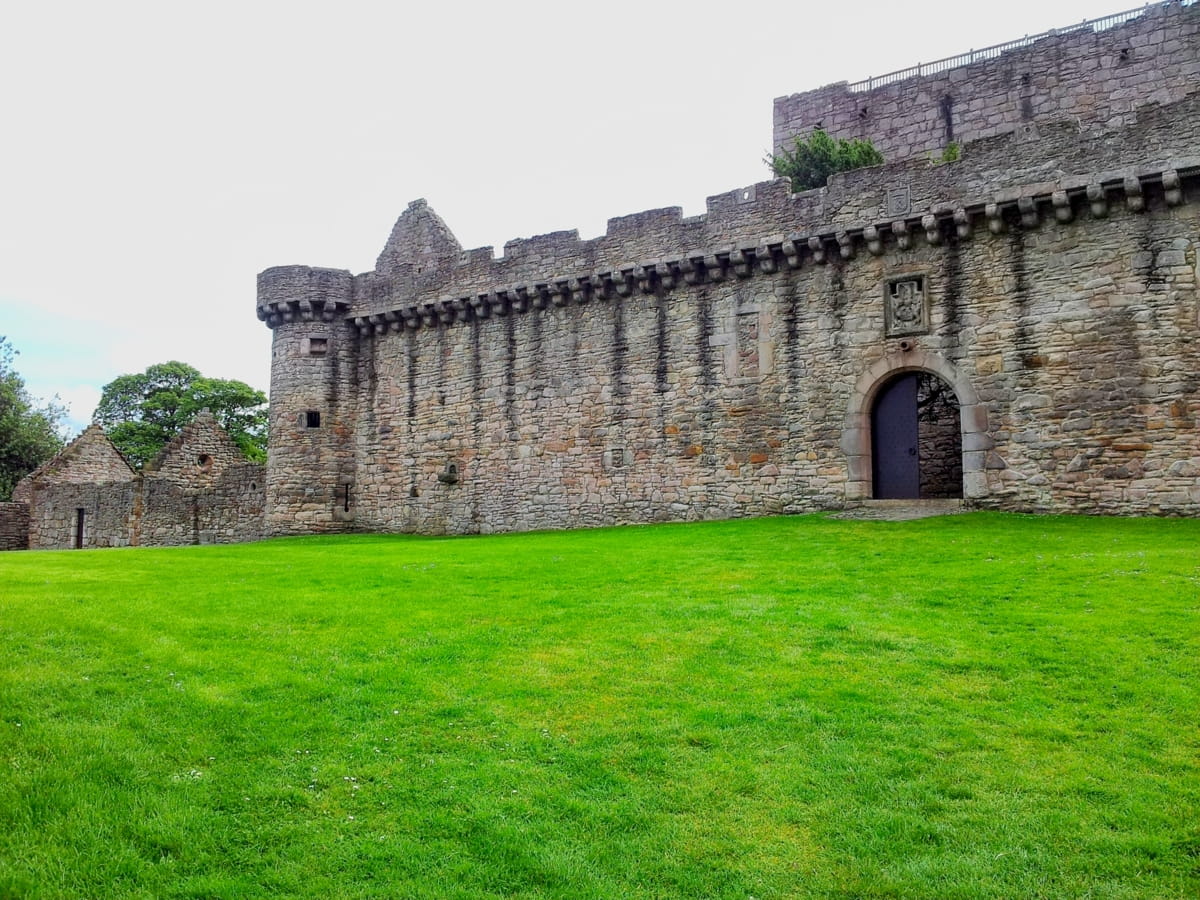
While Edinburgh Castle gets all the attention as Scotland’s most-visited tourist attraction, there’s another royal castle just a few miles to the south that’s worth visiting but is much, much less busy.
Craigmillar Castle is a 20-minute bus ride from Princes Street, just off the Old Dalkeith Road, near Edinburgh’s Royal Infirmary. It dates from the 1400s and was originally the power base of the influential Preston family before it was sold to the equally powerful Gilmour family in the 1660s.
As a castle, this one was built with security first and foremost in mind, with walls that are up to 10 feet thick, comprising an outer defensive wall, an inner wall, and a central tower house that would have been virtually impossible to breach back in the day. No wonder Mary Queen of Scots chose Craigmillar Castle as her favourite place to take refuge.
Visitors can explore pretty much the entire castle, as all of it is open to the public, from the east and west gardens to the terrace on the top of the tower house, as well as a great hall and a prison. There are no furnishings inside, but the majority of the walls and staircases are still intact, so visitors can get a good idea of how the castle would have looked back in Queen Mary’s day.
Highlights include the tower house rooftop, where you can get a superb viewpoint of Holyrood Park; the scenic inner garden that has picnic benches; and the land outside the castle that has footpaths running through woodland.
Facilities-wise, Craigmillar Castle is a wee bit lacking with a small shop, no café, and very limited parking spaces, but on the plus side, there are bus stops the length of Old Dalkeith Road, meaning visitors can return to the city centre in no time at all.
Crichton Castle
- Address: Pathhead, EH37 5XA
- Contact details: Tel. 01875 320 017
- Out About Scotland: A Complete Guide: Crichton Castle
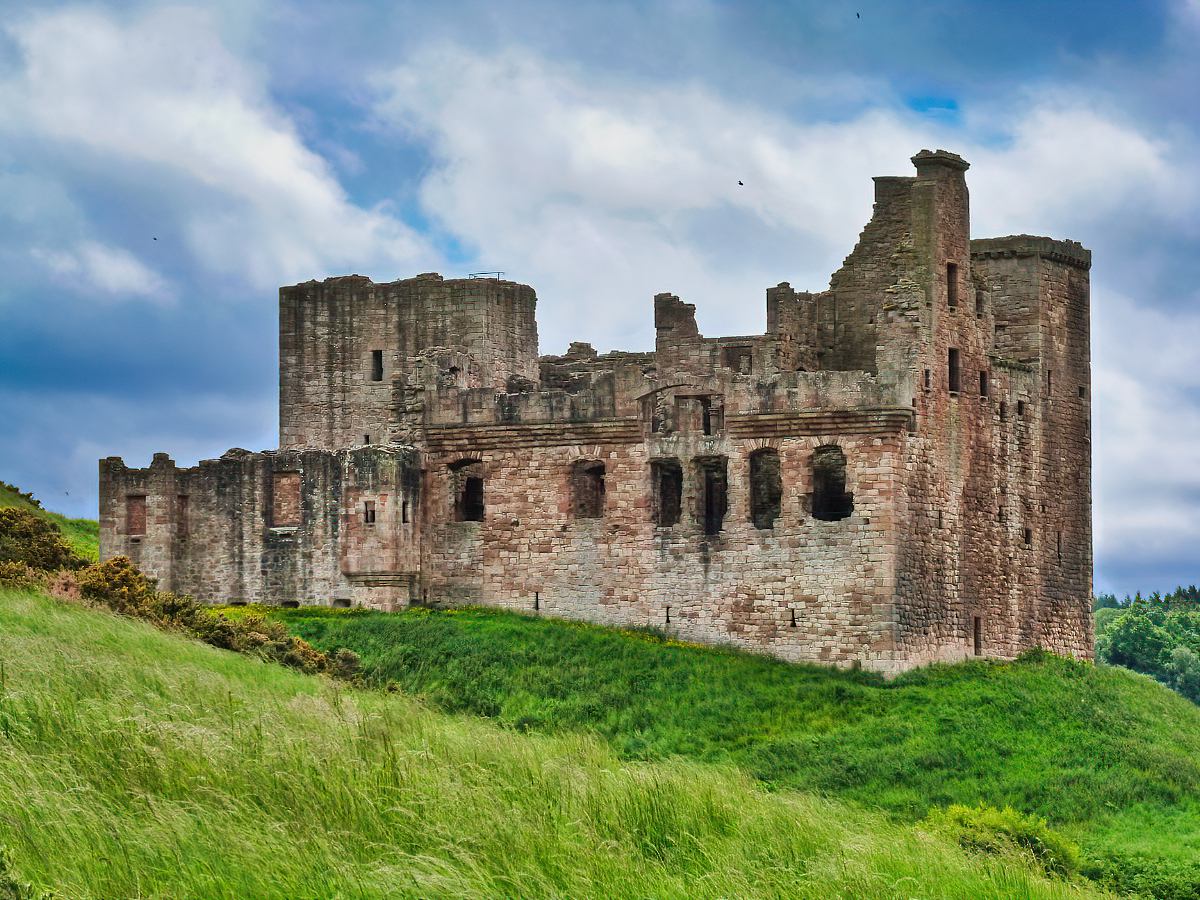
Crichton Castle in Midlothian is one of the hardest to find on this list, but it’s been included because it’s set in exceptionally pretty countryside and has a tower house that is one of the oldest in Scotland.
It was built in the late 1300s for the Crichton family and was their primary seat of power for two hundred years until they lost much of their wealth in the 15th century and were forced to sell the castle to the Earl of Bothwell.
Although it’s almost completely in ruin and without a roof, Crichton Castle is very photogenic, especially in the inner courtyard, which has very unusual diamond-shaped carvings on the walls. Some of the staircases are still accessible in the former residential quarter, so visitors can climb part way up, but due to their ruined state, it’s sadly not possible to get to the top of the main tower house.
One unusual feature of Crichton Castle is the building next to it that looks like it could have been a mediaeval church but is, in fact, the old stable block. It’s almost as fortified as the main castle and is quite unlike any other in the south of Scotland.
There are only a few facilities at this castle, which include a small car park and a small shop in the entrance kiosk, but be aware that there are no public toilets. On the positive side, Crichton Castle is frequently unmanned, and the entrance gate is often left open, so there’s every possibility you’ll arrive and find yourself able to enter at no cost.
A visit to this castle won’t take long—30–45 minutes—but I recommend timing your visit until late in the day as the surrounding woodland is a haven for bats. If bat-spotting isn’t on your agenda, you can always take a drive to Vogrie Country Park, which is just 2 miles north and features a café and miniature railway, or the National Mining Museum in Gorebridge, which is just 4 miles to the north.
Dirleton Castle
- Address: Dirleton, East Lothian, EH39 5ER
- Contact details: Tel. 01620 850 330
- Out About Scotland: A Complete Guide: Dirleton Castle
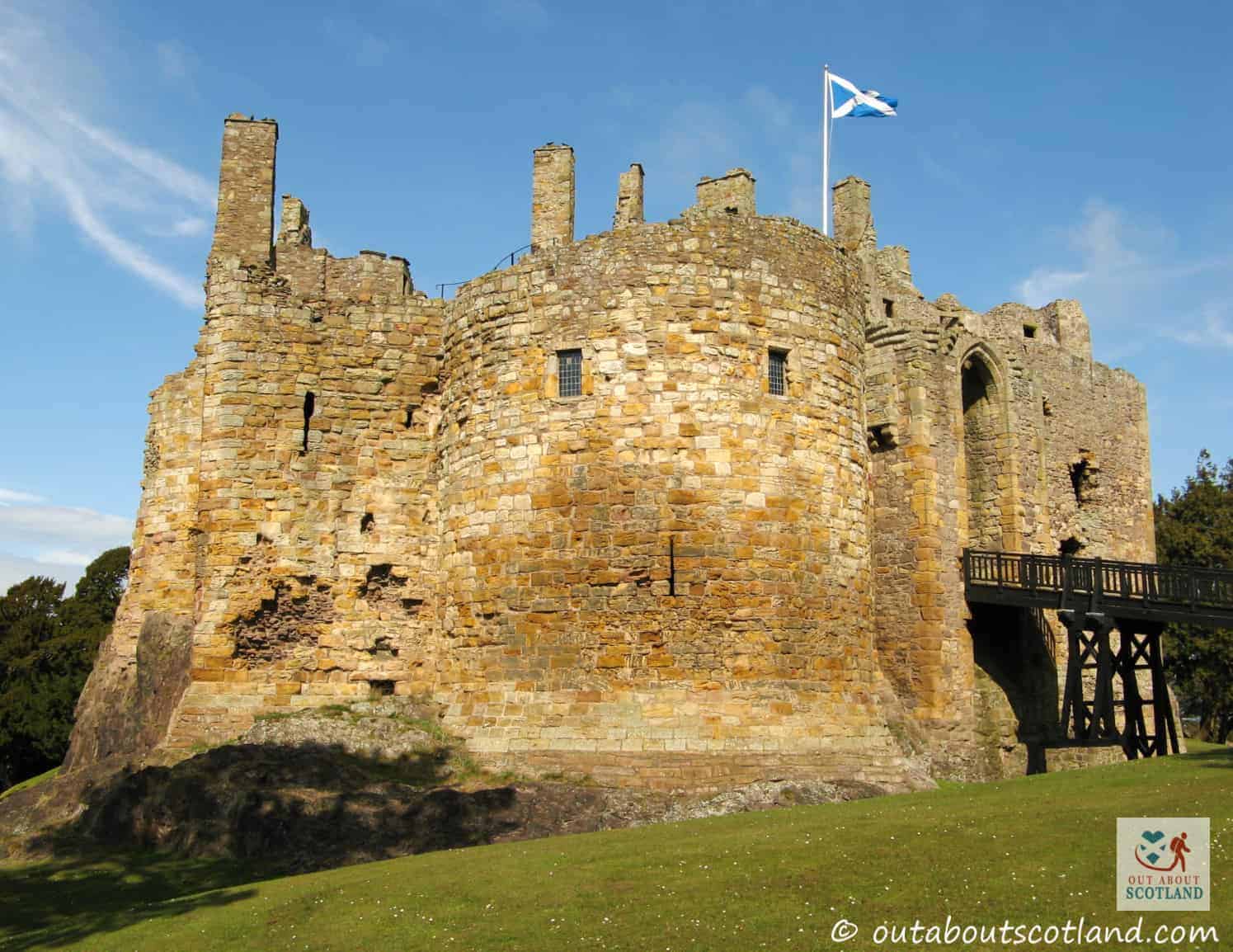
East Lothian is perhaps best known for its coastline, but there are more than a few historic sites of interest that visitors to the south of Scotland should consider adding to their sightseeing itineraries. One of my personal favourites is the castle in the village of Dirleton, located 2 miles east of North Berwick and a couple of hundred yards off the A198.
Like many fortified buildings in this part of the country, Dirleton Castle was built in the 13th century as a home to a powerful family (the de Vaux’s), and its age means it’s almost entirely in ruin, with a number of walls that have completely collapsed and no roof.
Even so, it’s certainly worth a visit, and there are two surprising stand-out features worth mentioning. The first is the two towers looming over the entrance walkway, which are among the oldest in Scotland. The second is the large garden outside the castle, which has the longest flowering border in the world.
There’s also one of the oldest surviving chapels in Scotland, a cavernous storage vault, and one of the largest and best-preserved pigeon houses in the country.
Facilities are quite good, with ample parking, a picnic area, a small gift shop, and educational displays, and there’s enough space outside the castle walls to let the kids run around and burn off some energy after romping around the castle’s nooks and crannies.
Several attractions in the area are worth exploring, including two gorgeous beaches at Gullane and Yellowcraig, Archerfield Walled Garden which has a superb café with indoor and outdoor seating, and North Berwick which is home to the Scottish Seabird Centre that runs tours to Bass Rock where one of the world’s biggest gannet colonies lives.
Doune Castle
- Address: Castle Hill, Doune, Perthshire, FK16 6EA
- Contact details: Tel. 01786 842768
- Out About Scotland: A Complete Guide: Doune Castle
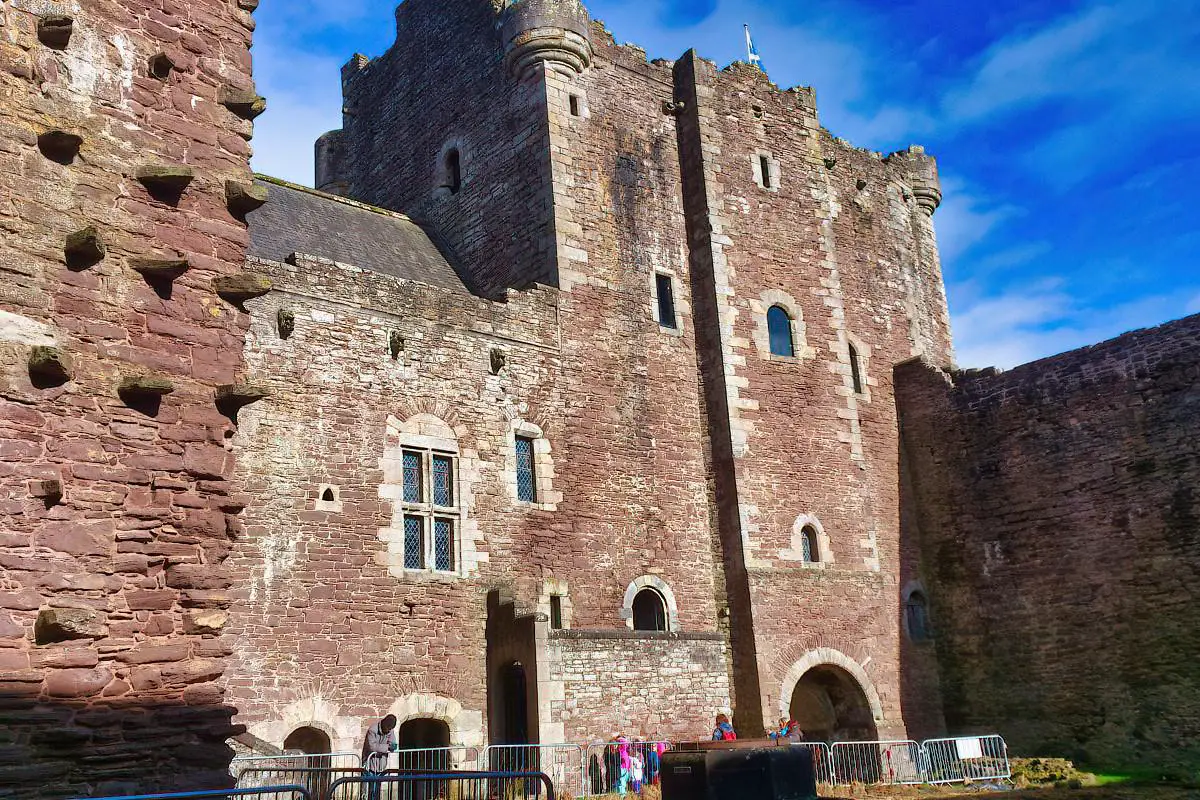
Fan of Monty Python, Outlander, or Game of Thornes? Then you have to visit Doune Castle in central Scotland.
This Perthshire fortress served as the home of the Duke of Albany and Earl of Moray from the 14th to the 19th centuries, which makes it one of the oldest and best-preserved castles from that time that’s still standing in Scotland. There are a lot of interesting features to look at during your visit, including one of the finest great halls in Scotland, and it’s immediately obvious that no expense was spared when Doune Castle was built.
The castle has played a starring role in several movies and TV shows in recent years, and many tourists visit just to snap a selfie or two in front of the main gate. However, there are lots of interesting features to discover for those willing to explore a little further, including the gatehouse, which is one of the biggest in Scotland.
Visitor facilities are pretty good for a historic attraction of this size, with a shop, picnic area, toilets, and ample parking, but sadly, there’s no café (although Stirling is only 8 miles away).
After walking around the castle (plan for one hour), you can head to many other attractions nearby, including Stirling Castle (9 miles) and Blair Drummond Safari Park (4 miles), as well as the Trossachs National Park, which lies 8 miles to the west on the A84.
Hailes Castle
- Address: Haddington, EH41 4PY
- Contact details: NA
- Out About Scotland: A Complete Guide: Hailes Castle
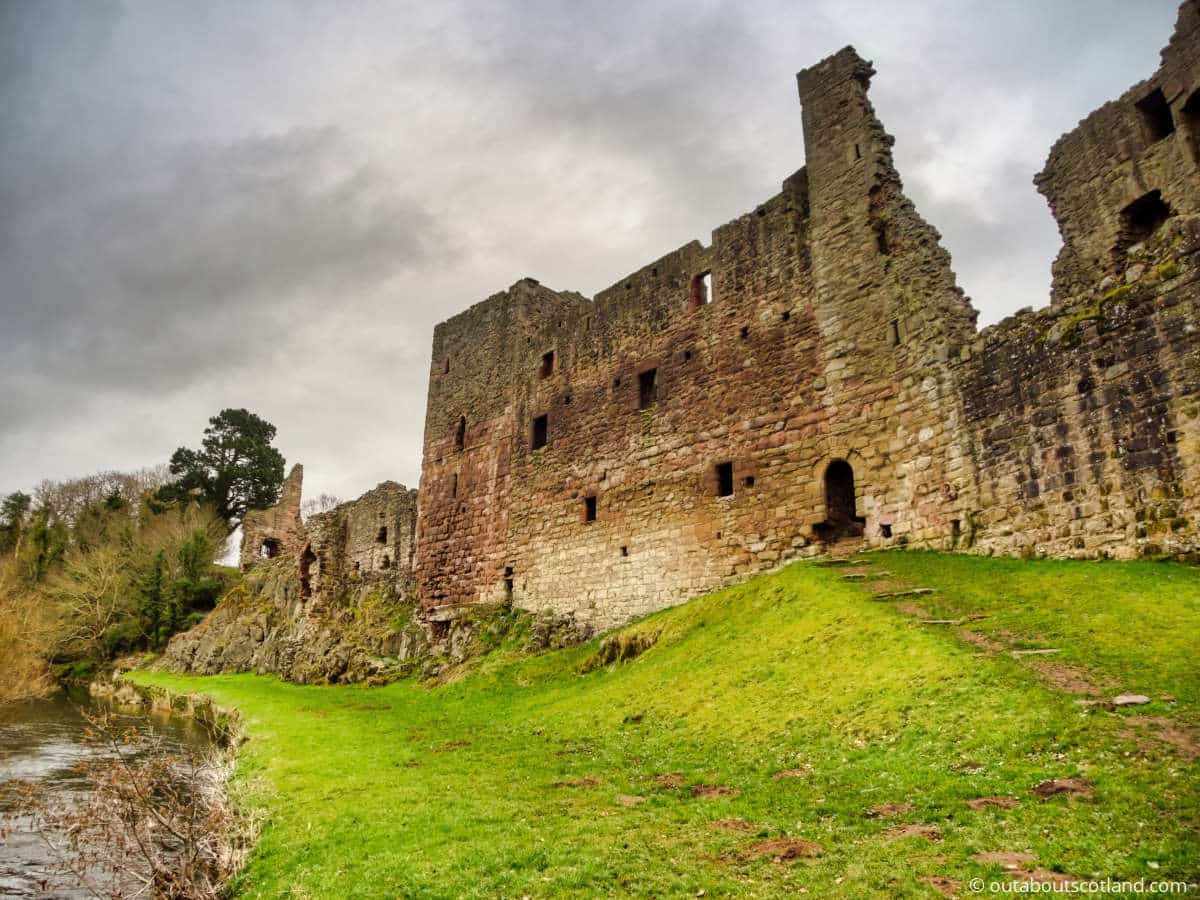
East Lothian is a massively underrated region of Scotland, which is a shame because tourists often miss out on gems like Hailes Castle, which is located in a very pretty setting next to the River Tyne. The castle lies midway between Haddington and Dunbar and is easily accessed from the A1, so visiting it by car only takes around half an hour from Edinburgh.
It’s quite small as castles go, and a visit shouldn’t take much more than half an hour, but there’s a lovely footpath along the river if you’d like to spend a little longer in the area. The original part of the castle was built in the 14th century and was extended several times, but as with most of these smaller fortifications, it was eventually abandoned and now lies almost entirely in ruin.
There are a couple of sections that give an indication of how big it would have been in its heyday, but apart from the underground brewery, the entire castle is roofless and exposed to the elements.
One point to note about Hailes Castle is that it’s unmanned and is therefore entirely free to visit, so taking a quick detour after a trip to nearby attractions like Preston Mill and the National Museum of Flight is a bit of a no-brainer. Children will love exploring all the nooks and crannies inside the crumbling castle walls, and the grass area next to the River Tyne makes a great spot for a summer picnic, especially as the castle is so secluded.
The main downside for tourists is the lack of available parking with space for just three cars on the road, but it’s possible to park up in Haddington and walk to the castle along the River Tyne, which is an extraordinarily scenic footpath that will stretch your visit into a full afternoon.
Linlithgow Palace
- Address: Kirkgate, Linlithgow, West Lothian, EH49 7AL
- Contact details: Tel. 01506 842 896
- Out About Scotland: A Complete Guide: Linlithgow Palace
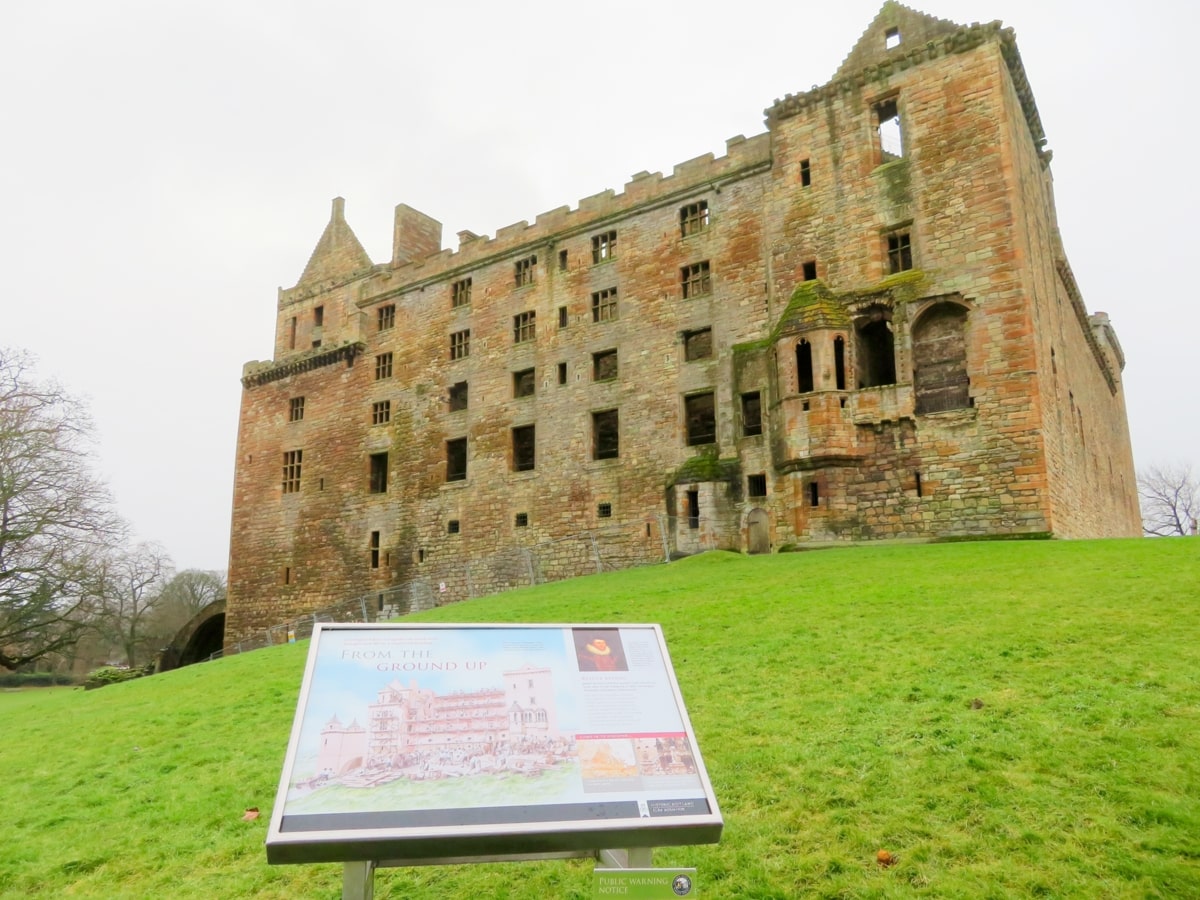
The West Lothian market town of Linlithgow lies midway between Edinburgh and Stirling castles, which is why an immense fortified palace was built there as a safe refuge for royalty travelling between the two cities.
Linlithgow Palace lies opposite a small freshwater loch that would have acted as a reliable source of fish for the palace’s occupants back in the day, and it’s the main reason why a fort of some kind is known to have existed on the site for at least 2,000 years.
Construction began on the palace in 1424 on the orders of James I, and it saw use as a royal residence for the following 300 years until a great fire swept through it in 1746, which destroyed most of the roof. By this time, the royal court had moved to London, and the upkeep of the palace was a drain on the nation’s coffers, so it was decided to abandon it entirely shortly after.
What remains is one of the largest fortified buildings of its age in Scotland, and although it’s a shadow of its former glory, it’s a genuinely fascinating place to visit.
Access to the castle lies down a narrow, cobbled alley, which leads onto a rough car park at the front entrance gate. There’s a small shop and ticket office at the entrance, which leads into the main courtyard, where visitors can then explore a maze of unfurnished rooms and hallways.
Two highlights at Linlithgow Palace make it memorable, the first of which is the enormous stone fountain in the inner courtyard. The fountain features many detailed carvings set into the stonework, and at the weekends in summer, it’s turned on so that visitors can watch it in action. The second highlight is the viewing platform at the palace’s highest point, Queen Margaret’s Bower, where superb views can be enjoyed across the loch to the Firth of Forth bridges in the far distance.
Outside the palace’s walls, footpaths run around the loch, which is a designated site of scientific interest due to the number of wildfowl that live there, and it’s a short walk into Linlithgow town centre, where there are lots of artisan coffee shops and restaurants.
Tantallon Castle
- Address: North Berwick, East Lothian, EH39 5PN
- Contact details: Tel. 01620 892 727
- Out About Scotland: A Complete Guide: Tantallon Castle
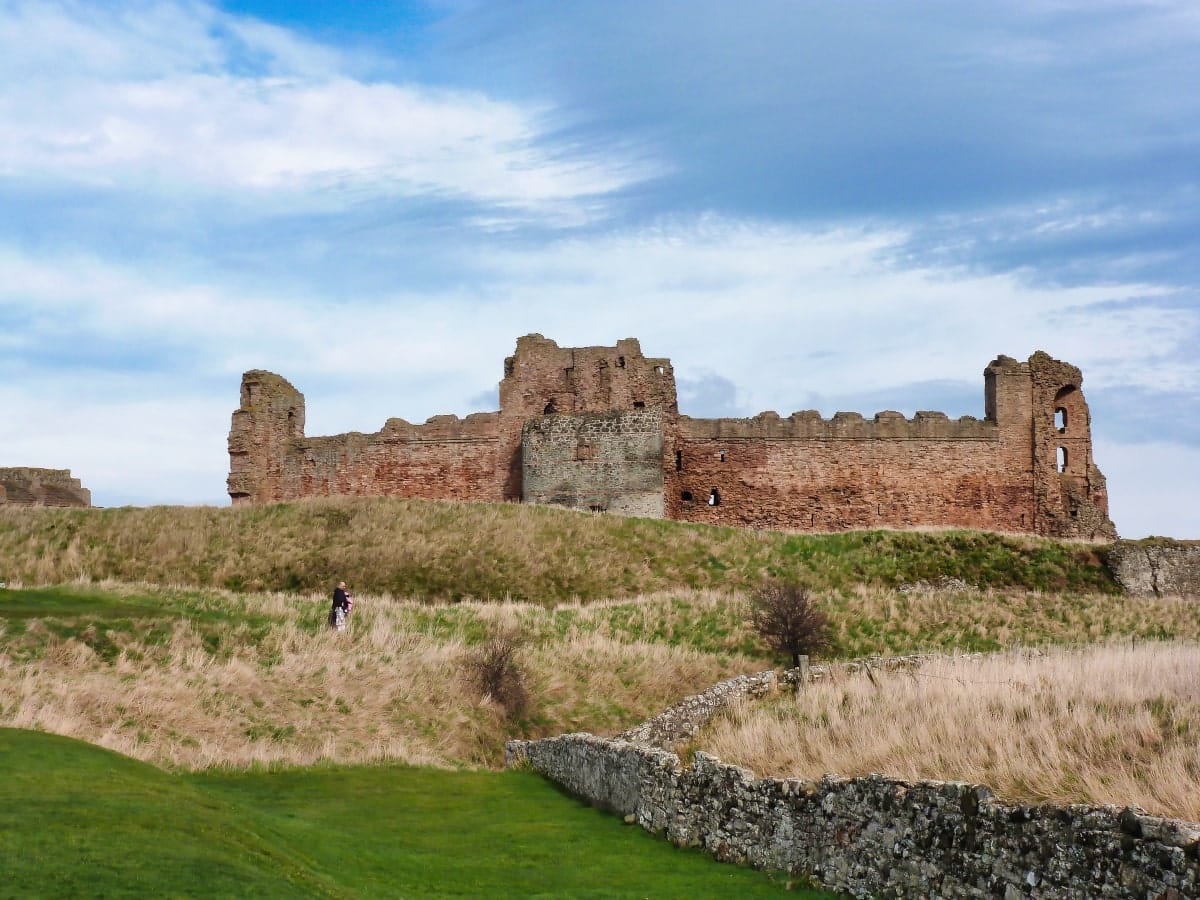
North Berwick is a must-visit for tourists to East Lothian, especially those who are planning to explore the county’s beautiful coastline.
One particular highlight that has to be included in this article is Tantallon Castle, which lies 3 miles south of North Berwick. This sizeable mediaeval fortress overlooks Bass Rock and Seacliff Beach and is best known as the last curtain-walled castle that was built in Scotland.
The 1st Earl of Douglas constructed it in the 1300s, and a succession of Scottish nobles lived there until Oliver Cromwell’s forces besieged it in 1650 and left it partially in ruins. Not much of the original castle remains today, but the huge castle wall on the landward side is almost entirely intact and gives some idea of how sizeable the structure would have been in its prime.
Visitors can explore the remaining residential area as well as the inner courtyard during a visit, but the highlight has to be climbing to the top of the curtain wall, which has a walkway with amazing views in all directions.
Historic Environment Scotland, which is in charge of managing Tantallon Castle, has put in a parking lot, a tiny ticket office and gift shop, as well as restrooms, a picnic area, and a few informational displays. I suggest giving yourself one hour to view the castle, after which you have options to head into North Berwick or enjoy any of the beaches on either side, with personal recommendations being Seacliff, Tyninghame, and Dunbar beaches.
Frequently Asked Questions
What is Scotland’s most beautiful castle?
Scotland is home to many beautiful castles, but the most popular is Edinburgh Castle. This iconic fortress is located on a volcanic plug in the heart of Scotland’s capital and offers stunning elevated views of the city and surrounding landscape.
Other beautiful castles in Scotland include Urquhart Castle, which lies on the banks of Loch Ness; Dunnottar Castle, which is situated on top of an enormous crag overlooking the North Sea near Aberdeen; and Eilean Donan Castle, which is positioned at the meeting point of the lochs Alsh, Long, and Duich in the Scottish Highlands.
Why is Urquhart Castle famous?
Urquhart Castle has a spectacular vantage point over Loch Ness, which has contributed to its fame. Its construction began in the 13th century, and for the next few centuries, it served as a strategic stronghold for Scotland, drawing intense fighting between the Scots and the English. Many myths and stories have developed around the Loch and Urquhart Castle, most notably that of the Loch Ness Monster.
Which is the oldest castle in Scotland?
Castle Sween is the oldest Scottish mainland castle for which we have reliable historical information. It was constructed in the 1100s and was inhabited for more than 500 years. It overlooks Loch Sween and the Isle of Jura from an elevated position on the northern end of the Campbeltown peninsula.
How many castles are in Scotland?
Scotland’s history is marked by the construction of an estimated 2,000 castles, of which around a quarter have now entirely disappeared from the landscape. Among the surviving 1,500 are castles like Edinburgh and Stirling that have been preserved in their entirety, as well as ruins such as Urquhart and Innis Chonnell.

